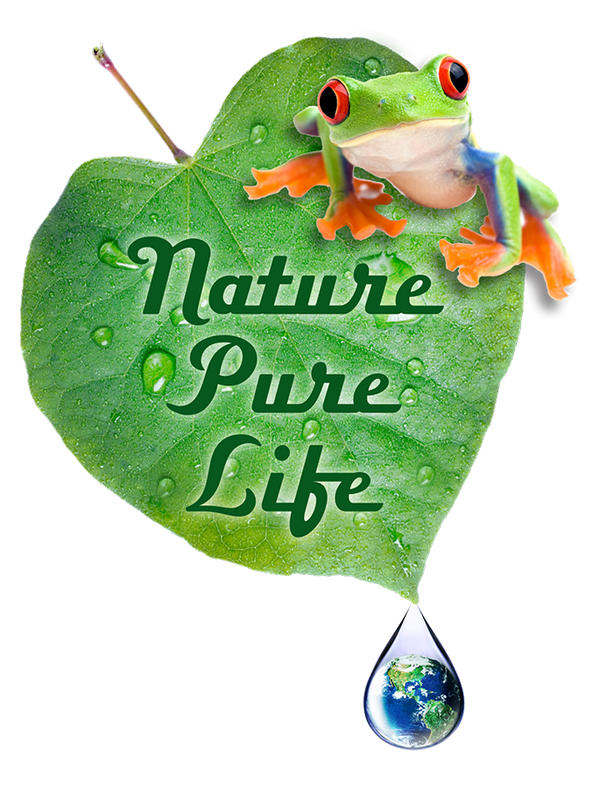
Effective OTC Creams for Shingles: Relief and Management
Share
Effective OTC Creams for Shingles: Relief and Management
Effective OTC Creams for Shingles: Relief and Management
Shingles is a painful viral infection caused by the reactivation of the varicella-zoster virus, the same virus responsible for chickenpox. It typically presents as a blistering rash, often accompanied by intense pain, itching, and discomfort. While antiviral medications are essential for treating the virus itself, over-the-counter (OTC) creams play a crucial role in managing the symptoms of shingles, offering relief from pain and itching. In this article, we’ll explore the best OTC creams for shingles, how to use them effectively, and when to seek medical advice for more severe cases.
What Is Shingles and Why Is It Painful?
Shingles, also known as herpes zoster, occurs when the dormant varicella-zoster virus reactivates in the body, often due to aging, stress, or a weakened immune system. The condition typically affects one side of the body, causing a rash that develops into fluid-filled blisters. These blisters can be extremely painful and may take 2 to 4 weeks to heal. In some cases, shingles can lead to complications like postherpetic neuralgia (PHN), a condition where nerve pain persists long after the rash has healed ([Shingles - Symptoms & causes - Mayo Clinic](https://www.mayoclinic.org/diseases-conditions/shingles/symptoms-causes/syc-20353054)).
Common Symptoms of Shingles
- A red, blistering rash, usually on one side of the torso, face, or neck
- Burning, tingling, or numbness in the affected area
- Severe pain that may feel like a stabbing or shooting sensation
- Itching and irritation around the rash
- Sensitivity to touch or temperature changes
The pain and discomfort associated with shingles can be debilitating, making effective symptom management essential for improving quality of life during recovery.
The Role of OTC Creams in Shingles Relief
While OTC creams cannot cure shingles or eliminate the virus, they are invaluable for alleviating symptoms like pain, itching, and inflammation. These creams are easily accessible without a prescription and can be used alongside antiviral medications prescribed by a doctor. For many, OTC creams provide immediate relief, making the healing process more bearable.
Why Choose OTC Creams?
- Accessibility: Available at most pharmacies and online retailers.
- Symptom Relief: Effective for reducing pain, itching, and discomfort.
- Complementary Care: Can be used with prescription treatments for a comprehensive approach.
It’s important to note that OTC creams are not a substitute for medical treatment. If you suspect you have shingles, especially if the rash is near your eyes or you’re experiencing severe symptoms, consult a healthcare provider immediately ([Shingles | Johns Hopkins Medicine](https://www.hopkinsmedicine.org/health/conditions-and-diseases/shingles)).
Best OTC Creams for Shingles: Types and Benefits
Several types of OTC creams are available for managing shingles symptoms. Below, we’ll explore the most effective options, how they work, and their specific benefits.
1. Calamine Lotion: A Time-Tested Remedy for Itching
Calamine lotion is a popular choice for soothing itching and reducing inflammation caused by shingles. It contains zinc oxide, which has anti-inflammatory properties that calm irritated skin. Great if you want to walk around with bright pink spots on your skin. Not very effective for most people, but better than not using it.
- Benefits: Relieves itching, cools the skin, and reduces redness.
- How to Use: Apply a thin layer to the affected area up to 4 times daily. Avoid heavy application to prevent crusting, which can delay healing.
- Precautions: Do not use on open wounds or blisters that have burst
([Calamine Lotion Uses: Benefits, Application & Potential Side Effects] (https://www.healthline.com/health/calamine-lotion-uses)).
2. Lidocaine Cream: Numbing the Pain of Shingles
Lidocaine is a local anesthetic that numbs the skin, providing temporary relief from the sharp, burning pain associated with shingles. OTC lidocaine creams are available in strengths of 2% to 5%. Works very well for short periods of time before you have to reapply.
- Benefits: Reduces pain and discomfort, especially in cases of acute pain or postherpetic neuralgia (PHN).
- How to Use: Apply a small amount to the affected area up to 3-4 times daily. Follow the product’s instructions carefully to avoid overuse.
- **Precautions**: Avoid applying to broken skin or mucous membranes. Overuse can lead to side effects like dizziness or irregular heartbeat ([Cream for Shingles Pain and Management: What's Available](https://www.healthline.com/health/cream-for-shingles)).
3. Natural and Homeopathic Creams: Do They Really Work?
Natural creams, such as Shingle Stop claims to relieve shingles symptoms using food grade natural ingredients. While users report positive results, scientific evidence supporting these claims is limited.
Benefits: May soothe irritation and promote skin healing. Works in minutes to soothe itch and burning, keeps working for hours. May be reapplied as needed. All natural ingredients.
- Precautions: These natural products are not regulated by the FDA, and their effectiveness varies. Always check for potential allergens before use
How to Use OTC Creams for Maximum Effectiveness
To get the most out of OTC creams for shingles, follow these best practices:
- Keep the Rash Clean and Dry: Gently wash the affected area with mild soap and water, then pat dry before applying any cream.
- Apply with Clean Hands: Use clean fingers or a cotton swab to avoid introducing bacteria to the rash.
- Avoid Scratching: Scratching can worsen the rash and increase the risk of infection. Use creams to manage itching instead.
In addition to using OTC creams, consider these home care tips to enhance relief:
- Apply cool compresses to the rash for 10-15 minutes several times a day.
- Take oatmeal baths to soothe irritated skin.
- Wear loose, breathable clothing to reduce friction on the rash ([Shingles Treatments: Medications and Home Remedies](https://www.healthline.com/health/shingles-treatments)).
When to Seek Medical Advice for Shingles
While Over The Counter creams can provide significant relief, they are not a cure for shingles. Certain situations require professional medical attention:
-
Severe Pain or Rash Near the Eyes: Shingles around the eyes can lead to vision complications. Seek immediate care if this occurs.
- Symptoms Worsen or Don’t Improve: If pain or itching persists despite using OTC creams, consult a doctor for stronger treatments. - High-Risk Groups: Individuals over 50, pregnant women, or those with weakened immune systems should see a doctor promptly, as they are at higher risk for complications ([Shingles (Herpes Zoster): Symptoms & Treatment](https://my.clevelandclinic.org/health/diseases/11036-shingles)).
Early treatment with prescription antivirals like acyclovir, valacyclovir, or famciclovir is most effective when started within 72 hours of the rash appearing. These medications can reduce the severity and duration of shingles
([Shingles - Diagnosis & treatment - Mayo Clinic] (https://www.mayoclinic.org/diseases-conditions/shingles/diagnosis-treatment/drc-20353060)).
Conclusion: Managing Shingles with OTC Creams
Over-the-counter creams, such as calamine lotion, lidocaine cream, and Shingles Stop natural options, are essential tools for managing the pain and itching associated with shingles. While they cannot treat the underlying virus, they provide much-needed relief during the healing process. For best results, use these creams as directed, keep the rash clean, and complement them with other home care measures.
However, it’s crucial to remember that OTC creams are not a substitute for medical treatment. If you suspect you have shingles, especially if you’re in a high-risk group or experiencing severe symptoms, consult a healthcare provider for a comprehensive treatment plan.
Frequently Asked Questions (FAQs)
1. Can OTC creams cure shingles?
No, OTC creams cannot cure shingles. They are designed to manage symptoms like pain and itching but do not treat the underlying virus. Antiviral medications prescribed by a doctor are necessary for that.
2. Are there any side effects of using over the counter creams for shingles?
Most OTC creams are safe when used as directed. However, overuse of lidocaine cream can cause side effects like dizziness or skin irritation. Always follow the product’s instructions.
3. Can I use OTC creams with prescription medications?
Yes, OTC creams can be used alongside prescription antivirals and pain relievers. However, consult your doctor to ensure there are no interactions.
4. How long does it take for OTC creams to work?
Relief can vary depending on the cream. Lidocaine may provide immediate numbing, while calamine lotion can take a few minutes to soothe itching. Natural creams may take longer, and their effectiveness is less predictable. Shingles Stop usually works within minutes to soothe the itch and keeps working for hours. Most people notice the rash beginning to dry in a few days.
5. What is the best cream for shingles pain?
Lidocaine cream is often recommended for pain relief due to its numbing properties. For itching, calamine lotion is an option.
For an all-natural solution take a look at Shingles Stop.
Key Citations
- [Shingles - Symptoms & causes - Mayo Clinic] (https://www.mayoclinic.org/diseases-conditions/shingles/symptoms-causes/syc-20353054)
- [About Shingles (Herpes Zoster) | Shingles (Herpes Zoster) | CDC](https://www.cdc.gov/shingles/about/index.html)
- [Cream for Shingles Pain and Management: What's Available](https://www.healthline.com/health/cream-for-shingles)
- [How to choose the best cream for shingles](https://www.medicalnewstoday.com/articles/creams-for-shingles)
- [Calamine Lotion Uses: Benefits, Application & Potential Side Effects](https://www.healthline.com/health/calamine-lotion-uses)
- [Shingles Treatments: Medications and Home Remedies](https://www.healthline.com/health/shingles-treatments)
- [Shingles | Johns Hopkins Medicine](https://www.hopkinsmedicine.org/health/conditions-and-diseases/shingles)
- [Shingles (Herpes Zoster): Symptoms & Treatment](https://my.clevelandclinic.org/health/diseases/11036-shingles)

